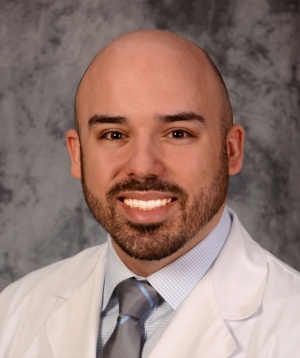Clinical Corner
QIs Red Light Therapy an effective treatment option for hair loss, e.g. AGA (Androgenic Alopecia)?
No matter how you cut it, people care about their hair! Hair loss is something that affects almost everyone at some point in their lives – it is estimated that more than 80% of men and almost 50% of women will experience significant hair loss within their lifetime.1 Although there are myriad reasons for hair loss, androgenic/androgenetic alopecia (AGA) is the most common culprit. Currently, there are only 2 FDA-approved medical treatments for AGA: topical minoxidil and oral finasteride. More importantly, however, is the fact that AGA has an ever expanding landscape of treatment options. Since being FDA-approved in 2007 (men) and 2011 (women), low-level laser light therapy (LLLT) has increased in popularity as new iterations of the technology continue to provide a nonmedical option for hair regrowth.2
Photobiomodulation (PBM) or LLLT has been around since the 1960s and since then various delivery options, e.g. stationary hoods, hand-held combs/brushes, headbands, or caps/helmets have come to market. PBM uses specific ranges of light, either visible (600-700nm) to near infrared (700-1400nm), that is produced by a laser or light emitting diode (LED) source.3 While the exact mechanism for hair growth via PBM is unknown it is postulated to increase proliferation of matrix cells in hair follicles and irradiation increases blood circulation at the dermal papilla, which boosts metabolic activity to proliferating cells.4 Some researchers have hypothesized that PBM drives telogen hairs into anagen phase and prolong its duration, resulting in the production of longer and thicker (terminal) hair.5
Regardless of the basic science, several RCTs have demonstrated PBM for AGA is safe and effective alone or in combo with FDA-approved medical treatments.
Both laser and LED modalities have shown to appreciably regrow hair when compared to placebo/sham groups, but LED seems to be better tolerated.3 This technology, especially those with LEDs, can serve as a meaningful addition to the management of AGA; especially to those patients who are not financially constrained or who want to take a more “natural” approach.
While the evidence for LLLT to increase hair growth in patients suffering from AGA is promising, there is currently a lack of consensus on ideal delivery and protocol for optimal results. Nevertheless, with growing treatment options for hair loss, the future looks lustrous and full-bodied!
References:
- Pillai JK, Mysore V. Role of Low-Level Light Therapy (LLLT) in Androgenetic Alopecia. J Cutan Aesthet Surg. 2021 Oct-Dec;14(4):385-391. doi: 10.4103/JCAS.JCAS_218_20. PMID: 35283601; PMCID: PMC8906269.
- Yang K, Tang Y, Ma Y, Liu Q, Huang Y, Zhang Y, Shi X, Zhang L, Zhang Y, Wang J, Zhu Y, Liu W, Tan Y, Lin J, Wu W. Hair Growth Promoting Effects of 650 nm Red Light Stimulation on Human Hair Follicles and Study of Its Mechanisms via RNA Sequencing Transcriptome Analysis. Ann Dermatol. 2021 Dec;33(6):553-561. doi: 10.5021/ad.2021.33.6.553. Epub 2021 Nov 4. PMID: 34858007; PMCID: PMC8577899.
- Torres AE, Lim HW. Photobiomodulation for the management of hair loss. Photodermatology, Photoimmunology, and Photomedicine. 2021. doi:10.1111/phpp.12649
- Leavitt M, Charles G, Heyman E, Michaels D. HairMax LaserComb laser phototherapy device in the treatment of male androgenetic alopecia: a randomized, double-blind, sham device-controlled, multicentre trial. Clin Drug Investig. 2009;29(5):283-292.
- Galadari H, Shivakumar S, Lotti T, et al. Low-level laser therapy and narrative review of other treatment modalities in androgenetic alopecia. Lasers Med Sci. 2020;35(6):1239-1244. https://doi. org/10.1007/s10103-020-02994-4


